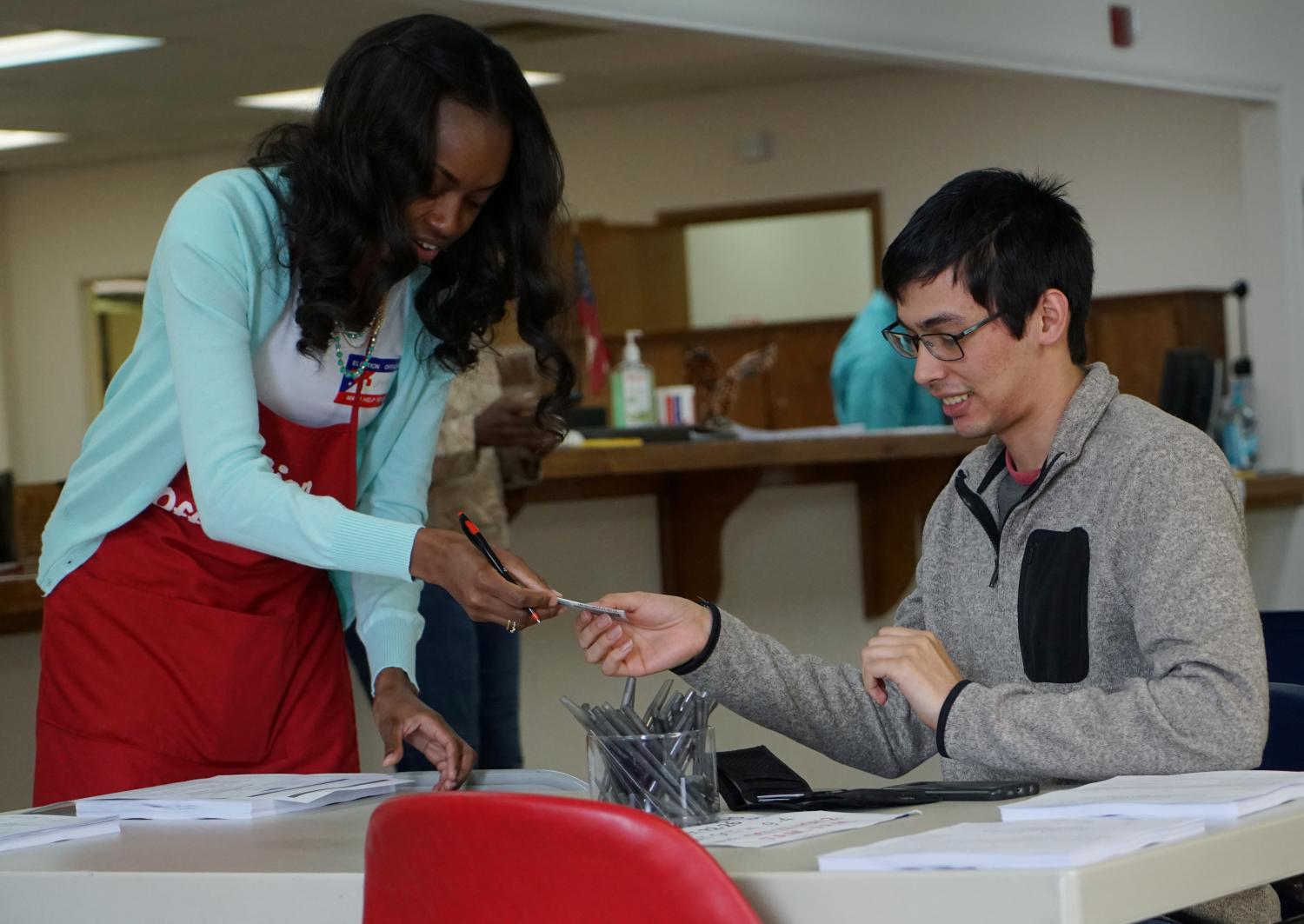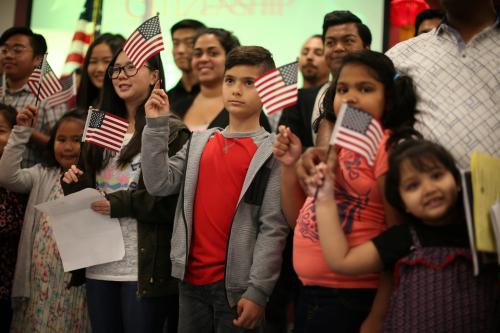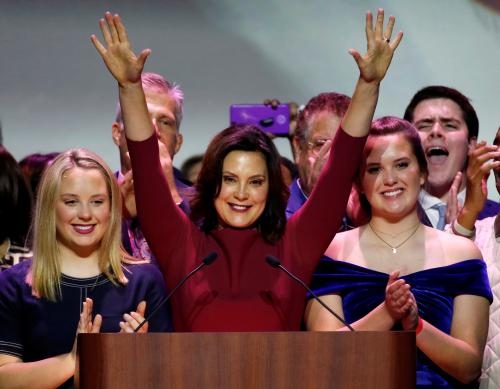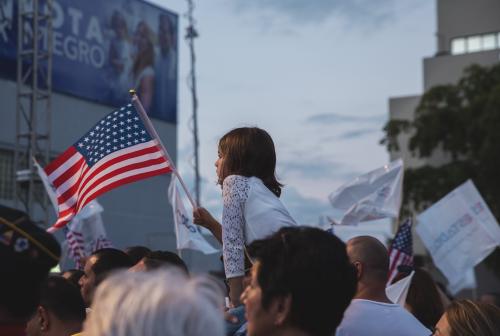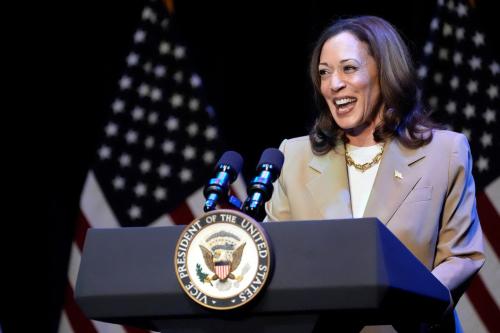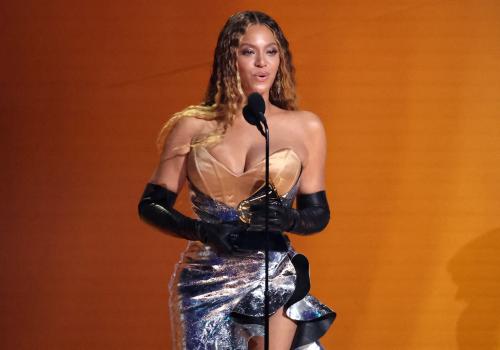Contents
- The turnout surge favored youth, “new minorities,” and white college grads
- Noncollege white voters made up less than 40 percent of all voters
- Turnout and voter shifts in battleground states
The results of the 2018 election are well known, highlighted by the Democrats’ “blue wave” takeover of the House of Representatives and other state offices across the country. However, recently released data from the Census Bureau sheds new light on how this was done—with extraordinarily high levels of voter turnout among voting blocs that lean Democratic. These data, from the Census Bureau’s Current Population Survey (CPS) voting supplement, provide information not available earlier—estimates of voter turnout for key demographic groups—both nationally and for states. They tell us which groups exceeded turnout expectations in 2018 and suggest that good things may be in store for Democrats in the 2020 presidential contest.
The turnout surge favored youth, “new minorities,” and white college grads
Even before all the votes were counted last November, reports indicated that turnout had surged. Now, the Census Bureau’s estimates show that the 2018 turnout—at 53.4 percent—was the highest in midterm elections since it started collecting voter turnout numbers (voters per 100 citizens) in 1978; and for the first time since 1982, it rose above 50 percent. Interestingly, this surge follows the lowest midterm turnout rate in the Census Bureau’s time series—41.9 percent in 2014.

Yet, a careful look at the new data shows groups that voted Democratic last November also displayed some of the biggest increases in voter turnout. Young adults ages 18 to 29—the age group that voted most strongly Democratic—saw a rise in their turnout rate by 16 percent from 20 percent in 2014 to 36 percent in 2018. Of course, older voters, ages 65 and above, continued to display the highest voter turnout levels at 66 percent; but the bigger 2014 to 2018 increase among young adults served to narrow the young/old turnout gap.

All major racial/ethnic groups turned up at the polls in higher numbers, but the biggest gains accrued to Democratic-leaning Hispanics and Asian Americans—up 13 percent since 2014. And while white citizens, overall, exhibited higher turnout rates than other groups, both the turnout level and recent rise were highest for white college graduates—a group that, nationally, supported Democratic House of Representatives candidates in November’s election.
The 2018 turnout—at 53.4 percent—was the highest in midterm elections since it started collecting voter turnout numbers in 1978.
Focusing further on young adults, the CPS turnout data reveal that 18 to 29-year-olds of each major racial group showed substantially higher turnout in 2018 than four years prior—more than doubling for young Hispanics and Asian Americans and nearly doubling for young white citizens. The latter is especially noteworthy because, unlike in the 2016 presidential race, the younger white population voted Democratic in last November’s House race, joining their counterparts of other racial groups.

While the above discussion highlighted sharp rises in turnout rates between 2014 and 2018, especially for Democratic leaning groups, the 2018 turnout rates for all groups were higher than those recorded by the Census Bureau since at least 2006 (download Table A). From a turnout perspective, 2018 was an extraordinary year.
Noncollege white voters made up less than 40 percent of all voters
The voter population is comprised of persons who reported voting on Election Day. Changes in it over time reflect both changes in the demographic makeup of the citizen voting-age population and changes in turnout rates within that population. In 2018, both factors led to a marked rise in the share of non-white voters and white college graduate voters as well as a decline in the share for white voters without college degrees. In fact, for the first time in the CPS series, “noncollege whites”—a group that strongly favors Republicans—comprised less than two-fifths of the voter population.
These changes make the voter population look quite different than in 2006, when noncollege whites comprised fully half of it and nonwhite minorities comprised only one-fifth. Since then, the former’s share dropped to 39 percent and the latter rose to 27.2 percent. Changing demography has been a factor as younger generations of voting-age citizens, in particular, have become more racially diverse and better educated. But the recent rise in turnout for college graduate whites along with Hispanics and Asian Americans helped to engineer this shift.

In 2018, nonwhite voters made up 27.2 percent of the voter population. This is a rise from 23.7 percent in the 2014 midterms, and higher than the 26.7 percent in the 2016 presidential election. The latter is notable because, normally, white voters make up larger shares of midterm voters than presidential year voters due to lower midterm minority turnout. This was not the case in the 2018 midterms, suggesting even greater minority clout in the 2020 election.
Not only was the 2018 voter population more educated and racially diverse than those of earlier midterms, it was also younger (download Table B). Due to the higher turnout of 18 to 29-year-olds and 30 to 44-year-olds, the under age 45 population rose to 35.4 percent of voters in 2018, up from just 30.3 percent in 2014. Most notably, those ages 65 and above made up a slightly smaller share of voters, 27.1 percent in 2018, despite the continued entry of the large baby boom generation into this age group.
Turnout and voter shifts in battleground states
The national trends toward greater turnout for groups that typically vote for Democrats holds for a majority—but not all—states. One turnout trend that is fairly pervasive is the rise of young adult voter turnout. According to the census results, all but two states (Kentucky and Louisiana) showed young adult turnout increases (download Table C). In 2018, young adult turnout rates exceeded 35 percent in 31 states (including Washington, D.C.). In 2014, not one state registered a turnout rate that high. Greatest gains from 2014 to 2018 occurred in the states of Missouri, Vermont, New Jersey, Tennessee, Rhode Island, Virginia, and California as well as in the District of Columbia.
Among the nonwhite population, all states except two (Louisiana and Maine) showed 2014 to 2018 turnout increases. Overall, 39 states displayed 2018 rates greater than 40 percent, compared with 14 states in 2014. Still, despite these gains, the nonwhite turnout was lower than white turnout in all states except Mississippi and South Carolina (download Table C).
In 2018, young adult turnout rates exceeded 35 percent in 31 states (including Washington, D.C.). In 2014, not one state registered a turnout rate that high.
These broad trends aside, it is useful to examine racial/ethnic patterns in some individual battleground states. Figure 5A below displays 2014 and 2018 white and black turnout differences for Pennsylvania, a northern battleground state with a significant black population, and Georgia, an emerging southern battleground with a large presence of black voters. In Pennsylvania, Democrats did well in the 2018 election, capturing three House seats and re-electing their gubernatorial and Senate candidates. In Georgia, Democrats picked up a House seat and their gubernatorial candidate, Stacey Abrams, lost a closely contested election to Republican Brian Kemp.

Both states showed similar turnout shifts in 2018, including such high levels of black voter turnout that their turnout gains exceeded white voter gains. In fact, Georgia is one of the few states where black voter turnout exceeded white voter turnout in 2018. Moreover, its 2018 black voter turnout of 60 percent exceeded its turnout in the 2016 presidential election by 1 percent. These trends are important because the strong Democratic vote among blacks in both states made each competitive.
Different dynamics occur in two southern states, Florida and Texas, each with substantial black and Hispanic populations (see Figure 5B). Florida’s close statewide elections for Governor and a Senator favored Republicans. This was also the case in Texas. Perhaps part of the reason was because of the higher turnout bumps among white voters than for black or Hispanic voters in each state.

The black, Hispanic, and Asian American populations are growing faster than the white population in Texas, despite the fact that these nonwhite groups had lower turnout gains than white citizens. Thus the 2018 election elicited a more racially diverse voter population in the Lone Star state than earlier midterm elections. This is also the case in Georgia where the growth of its large black voting age population is amplified by its recent rise in black voter turnout. In both states, minorities rose from 30 percent of voters in 2006 to nearly 40 percent in 2018. Although white voters tend to vote more Republican in these states than in many northern states, the combination of demographic change and potential nonwhite turnout growth could very well make both of them competitive in the 2020 presidential election.

The rise in voter diversity was apparent among a broad spectrum of states with most showing a decline in white voter share since 2014, led by Massachusetts, California, and Delaware (download Table D). Corresponding to this is the pervasive decline in the white noncollege share of voters across states (download Table E). While the three states with white noncollege voter shares above 60 percent—West Virginia, Kentucky, and Wyoming—each displayed modest increases in those shares between 2014 and 2018, most of the other states in this category showed decreases. Notably, some of the bigger declines in white noncollege voter shares occurred in northern battlegrounds: Pennsylvania, Wisconsin, Minnesota, and Iowa.
Indeed, 2018 was an extraordinary, almost historic year for midterm voter turnout. The Census Bureau’s new data make plain that it is not just how people vote, but who turns out to vote that can shape an election. If the enthusiastic 2018 turnout surge of Democratic leaning groups—young adults, new minorities, and white college graduates—is repeated in 2020, we could well be facing the rush of another blue wave.
Note: Thanks to Cathy Sun of the University of Michigan Population Studies Center for programming and data preparation assistance.

